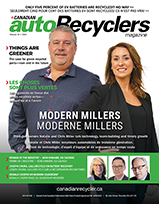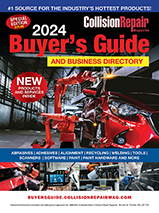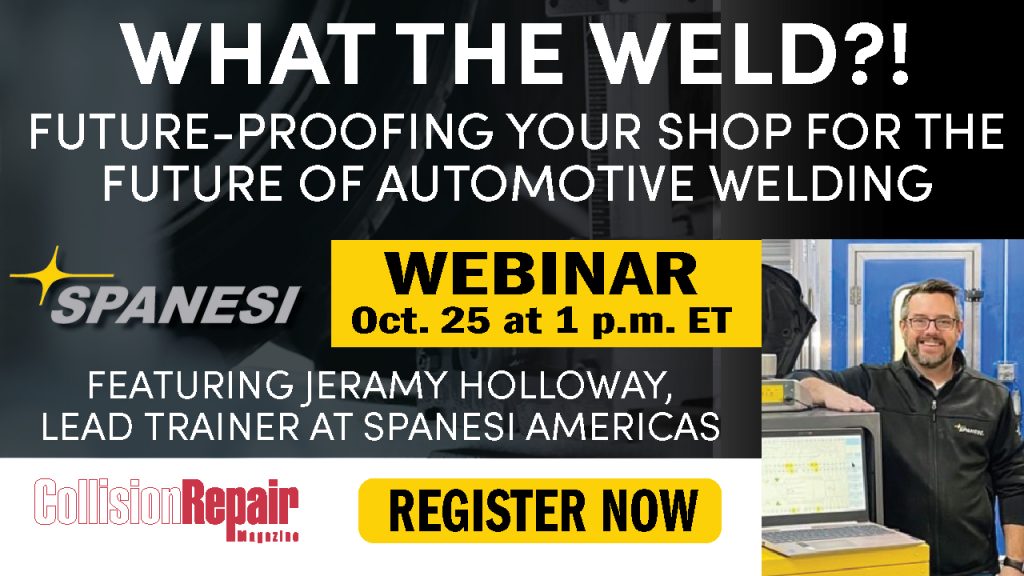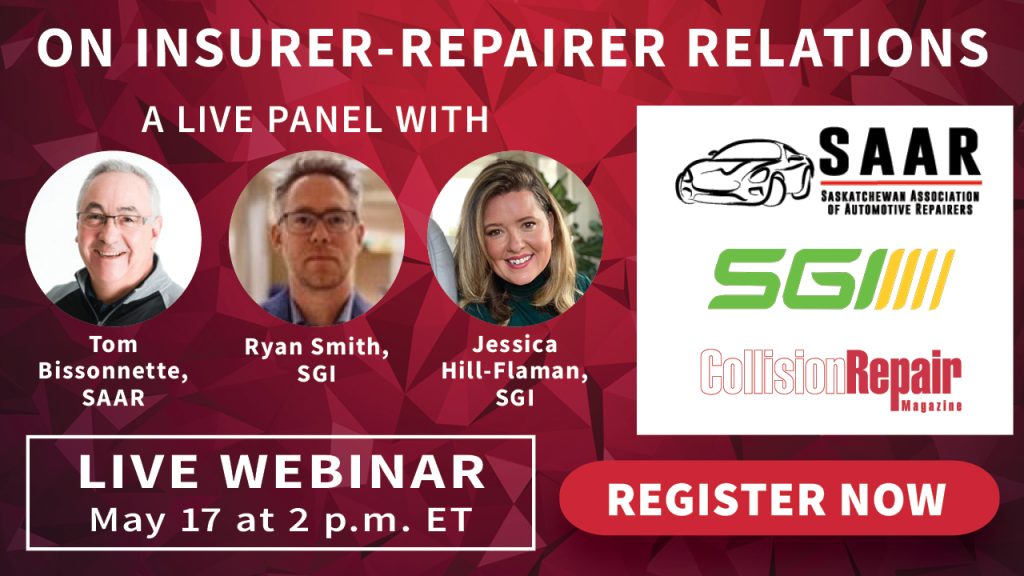Toronto, Ontario — June 19, 2018 — Guild 21 held its teleconference last week. The guest speaker, Bryan Robaina, helped the audience work through the issues involved in that key debate in the collision repair industry, repair or replace?
Bryan Robaina, founder, Eco Repair Systems of North America, provides adhesive-based paintless dent repair (PDR) products and training. On the Guild 21 call Robaina explored the lesser-known benefits of using PDR techniques on larger, more complex jobs.
Using glue tags to pull out smaller dents without having to repaint the vehicle has been a practice in the industry. PDR techniques emerged out of the hail repair sector, where the repairs were small compared to the cases a traditional collision repair centre would handle. Robaina explained that PDR techniques can be beneficial in that the tools can allow a part to be repaired rather than replaced. This is reason number one to consider adhesive-based techniques: “It is best to repair rather than to replace parts,” says Robaina. “This way you are maintaining vehicle integrity.”
According to Robaina, anti-corrosion barriers applied in the factory are tough to recreate in a shop. If a factory-applied part can remain on the vehicle, it should be a considered option says Robaina. “Whenever you remove a factory part you’re removing the factory seal. It’s very difficult to get that back when you take a factory panel off. You can’t access the back area of that as you can in factory.”
“You have to reference the OEM guidelines to see what can be done. If the OEM status is that you are not allowed to replace structural panels that are welded or bonded to the structure, then that’s what you have to do,” says Robaina.
Repairing a panel rather than replacing it, according to Robaina, can also be a less complex operation. And that could mean a more efficient shop. “The main objective of the repair is to reduce the severity of repair. We’re looking at reducing cycle times and reducing repair times. If you’re not familiar with car, the tech doesn’t have to go into the job and begin figuring all of that out. This system allows you to not do that,” says Robaina.
There are also car buyers who worry about replacement parts on a vehicle. Non-factory parts can see what is called ‘diminished value’ applied to the vehicle in a sale. Repairing an original can avoid that reduction in value. “This is about what’s best for the vehicle. If you get into any excessive or intrusive repairs, that’s diminished value. Keep in mind what’s best. Try to repair rather than replace some of these welded body panels. That’s going to avoid that diminished value,” says Robaina.
The important first step in this repair is to do, “… a thorough physical inspection,” says Robaina. Check for intrusion or beam damage. If structural parts are damaged that’s going to require a more substantial repair process.
Repairing a vehicle with adhesive pull tabs is a bit of an art. According to Robaina there are preferred methods. “The paint is our reflective guide coat. We use that along with an LED light to figure out if the repair is going our way or not,” says Robaina. “A lot of techs use touch, but what we want to do is get people to look. When the vehicle owner gets it back, they’ll look. We want techs to use eyesight as the primary sense to get this right.”
According to Robaina white cars are the toughest to photograph properly. If you’re sending a picture of the job to the insurance company, “Try to get as many shots as can. Do a large number of photos with a white car,” he says. Those can be the most difficult when it comes to visibility of the collision site.
Visit collisionrepairmag.com later this week for more of our in-depth coverage of Guild 21.





























































